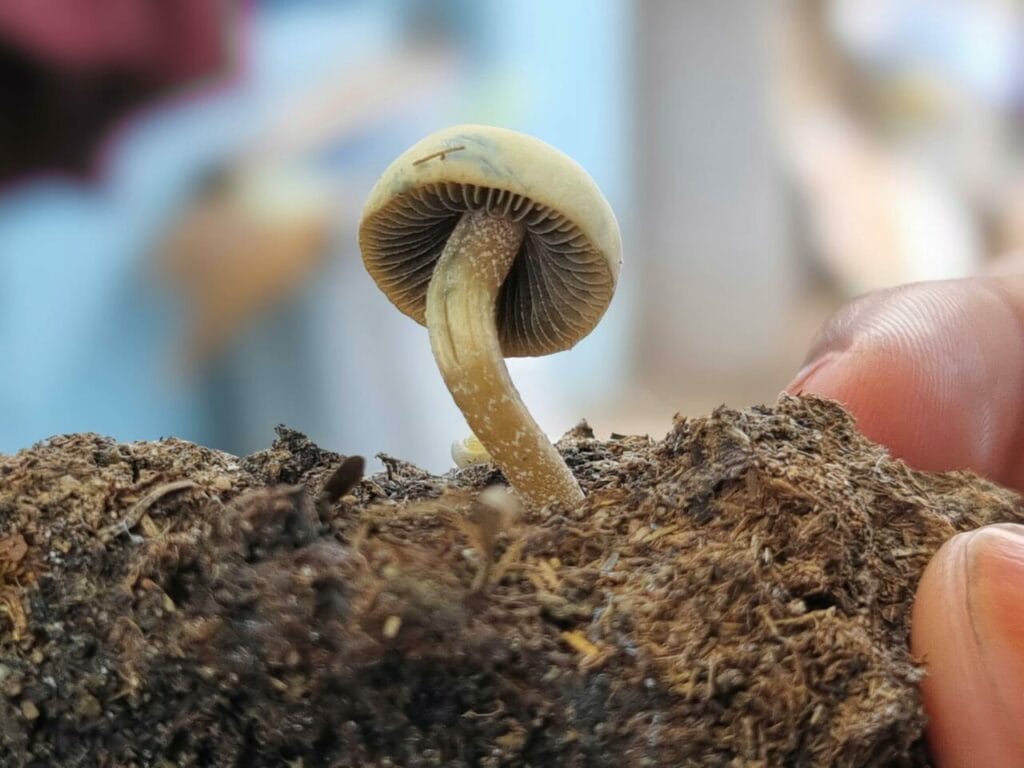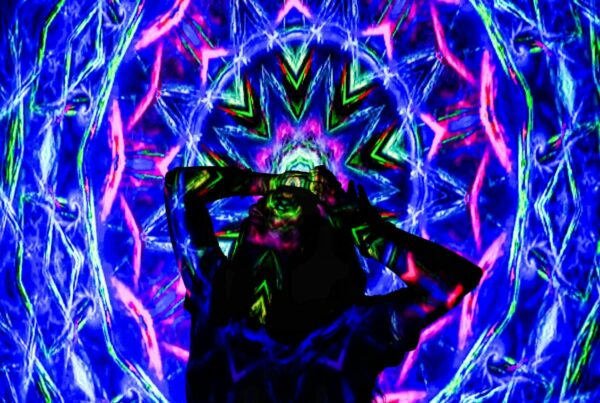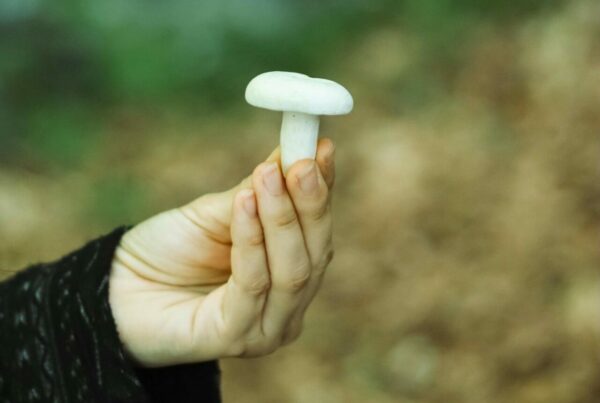In the wake of severe injuries that alter their lives, a rising number of athletes are investigating unconventional methods of healing and recovery.
Among these unconventional approaches, psychedelics, for example, magic mushrooms, are becoming increasingly popular with athletes seeking relief and rehabilitation. This trend signifies a shift in the sports community’s attitude towards alternative therapies, as athletes search for innovative solutions to their physical and psychological challenges.
Many athletes admit to using magic mushrooms outside a clinical setting, suggesting that they likely sourced them from a magic mushroom dispensary. The impact of their magic mushroom consumption has had a substantial effect on their mental health and other hurdles they face.
[toc]Key Takeaways:
- Athletes confront mental health problems at rates similar to or even exceeding those of the general public.
- Psychedelics may stimulate neuron growth, possibly offering therapeutic benefits for individuals recovering from traumatic brain injuries.
- The primary advantage of psychedelics is their potential to positively affect mental health, aiding athletes coping with the aftermath of injuries or severe stress.

Athletes’ Experiences as Covered in a CNN Report
The CNN article written by Amy Woodyatt, with input from George Ramsay, delves into the use of psychedelics by athletes to manage serious sports injuries.
A particularly poignant account was shared by Daniel Carillo, a former Canadian ice hockey player. His struggles included seven confirmed concussions leading to dementia-like symptoms, depression, anxiety, suicidal tendencies, and chronic headaches. These problems became so debilitating that even straightforward family activities became daunting tasks.
Carillo started researching medical literature and came across a psilocybin study carried out by the Imperial College of London. Rather than joining a clinical trial, Carillo decided to consume a substantial dose in a more casual environment.
During an interview with CNN, he revealed his routine of regularly microdosing psilocybin supplemented with occasional usage of larger quantities. Moreover, he
He prioritizes his well-being by frequently undergoing brain scans and blood tests.
He emphasizes the importance of consistent physical exercise, sufficient rest, disciplined consumption of sugar and alcohol, and regular sun exposure in maintaining his energy levels.
The Appeal of Psychedelics to Athletes
Carillo isn’t the only athlete who has turned to psychedelics for help in navigating life’s challenges. Many professional athletes have experimented with substances ranging from ayahuasca to LSD in an attempt to enhance their overall wellness, especially concerning mental health.
According to research by Courtney Walton, an academic fellow in psychology at Melbourne School of Psychological Sciences, elite athletes experience mental health issues at rates comparable to or even higher than the general population. Psychedelic therapy appears to offer promising solutions for athletes’ mental health issues, particularly those related to common struggles such as resistance to therapy, identity crises during career transitions and injuries, and managing interpersonal stress and conflicts.
The application of psychedelics in mental health treatment is particularly important for athletes. The brain controls various bodily functions including organ regulation, thought processes, emotional regulation, memory storage, speech facilitation, and movement coordination. Individuals with impaired mental function might experience a decrease in their performance and focus.
Focus is crucial in sports, and there is growing curiosity about the potential role psychedelics could play in boosting this concentration. In the same CNN report, NFL quarterback Aaron Rodgers openly discussed his personal experiences with psychedelics. He shared that consuming a brew made with ayahuasca, a concoction from Amazonian plants with psychoactive properties, positively impacted his football performance.
Perspectives from Experts
Experts in the field assert that psychedelics have demonstrated efficacy in treating certain mental health conditions.
In a discussion with CNN Sport, Robin Carhart-Harris, Professor of Neurology and Psychiatry at the University of California, pointed out that the situation becomes intriguing when viewed from the angle of psychological therapy, particularly for treating depression, with a few significant exclusions.
Regarding treating brain disorders, Carhart-Harris emphasized the scarcity of exhaustive data on the use of psychedelics for brain injury therapy. Some research suggests that psychedelics might encourage
Despite the potential for promoting neuron growth, only a handful of studies have specifically investigated the potential advantages of psychedelics following a brain injury.
In the context of exploring the potential uses of psychedelics in mental health and brain injury treatment, experts emphasize the need for careful usage. Due to their potent effects, psychedelics could potentially instigate psychological issues in individuals who are psychologically vulnerable.
Deciphering the Interactions between Psychedelics and the Brain to Understand their Effects
The impact of psychedelics can vary depending on the specific kind consumed. Consider magic mushrooms as an illustration. As per Health Canada, these are types of mushrooms containing hallucinogenic substances such as psilocybin and psilocin, which can lead to sensory modifications. These may include visual or auditory hallucinations, tactile feelings, emotional shifts, or even physical symptoms like muscle spasms and alterations in heart rate or blood pressure.
The effects are not directly generated by psilocybin; rather, after ingestion, it is metabolized into psilocin, the compound accountable for the effects. Psilocin stimulates serotonin 5-HT2a receptors present on cortical pyramidal cells in the brain.
David Nichols, a professor at Purdue University School of Pharmacy and a long-time researcher of psychedelics, explains that these cells serve as the primary computational units of the brain, functioning as the central processing hub. The stimulation of these receptors by psilocin results in alterations in brain metabolic activity and neuronal connectivity, influencing cognitive function and perception.
In relation to brain injury treatment, several theories suggest potential benefits of psychedelics. Classic psychedelics interact with serotonin receptors, known for regulating inflammation, and can also restrain cytokine inflammatory cells. This dual action could enhance blood flow to injured regions and stimulate tissue repair post injury. In animal studies, DMT has proven useful in minimizing brain damage caused by arterial blockage.
Magic Mushroom Dispensaries: A Route to Healing through Shrooms
Magic mushroom dispensaries act as a secure and dependable source for those in search of genuine magic mushroom products. These dispensaries ensure safe transactions by delivering items through reliable carriers like Canada Post.
While exploring an online magic mushroom dispensary, you’ll encounter a broad range of shrooms and psychedelic products. Each product possesses its own unique features and advantages, providing users with the option to select a product that best aligns with their needs and preferences.
| PRODUCT | IDEAL FOR |
| Dried Shrooms | Those who savor mushroom flavors and seek potent, immediate effects |
| Edibles/ Drinks | Those aiming to mask undesirable tastes and prevent nausea during extended trips |
| Capsules | Those looking to integrate shrooms into their wellness regimen via microdosing |
Conclusion
Psychedelics like mushrooms may offer therapeutic benefits for athletes grappling with traumatic injuries and job-related stress. They propose various techniques for managing symptoms, particularly when used in conjunction with therapy. This combination yields promising and enduring outcomes, as evidenced in multiple studies.
Although psychedelics are yet to receive formal acknowledgment as a treatment option by the medical fraternity, professionals caution that ingesting magic mushrooms necessitates comprehensive knowledge for safe usage.
Frequently Asked Questions
Do athletes use psychedelics in high or low doses?
Psychedelic usage varies according to individual requirements and inclinations. CNN interviews expose diverse consumption patterns: some opt for occasional high doses, while others prefer small doses to enhance focus or promote overall health.
Carhart-Harris posits that low doses of psychedelics hold substantial promise in boosting mindfulness capabilities. This can foster heightened focus, facilitating the attainment of a flow state.
Can I buy magic mushrooms at a medicinal mushroom dispensary?
Medicinal mushroom outlets predominantly sell various mushrooms, like Reishi, Lion’s Mane, Turkey Tail, and more. For magic mushrooms, consider patronizing a magic mushroom or psychedelic dispensary. Exercise caution to steer clear of unlawful magic mushroom dispensaries or sellers misrepresenting authentic psychedelics.
Is it advisable to include talk therapy when consuming psychedelics?
In clinical studies, the intake of psychedelics is often paired with therapy sessions. Research suggests that this tandem approach can foster a more profound comprehension of individuals’ experiences with high-dose mushrooms, thereby enriching the psychedelic experience.
Do psychedelics have a role in handling injury-related Can psychedelics be used to manage pain?
The potential of psychedelics in pain management has not been extensively studied. Yet, Anna Symonds, a former rugby player from the US, hints at the possible advantages of using cannabis for this purpose.
F. Z. Zia and his team at the National Institutes of Health have delved into the possible use of psychedelics in treating chronic pain. Their research indicates that psychedelics could help mitigate different kinds of pain, including headaches, cancer-related pain, phantom limb pain, and neuropathic pain. The researchers propose that psychedelics may serve as “effective adjuncts” in managing chronic pain and associated conditions such as PTSD and major depression.
However, research on the use of psychedelics for acute pain is scarce.
How can athletes incorporate psychedelics into their routines?
Microdosing, or the routine ingestion of small quantities, is a distinct aspect of psychedelic use. It has garnered interest among athletes because it can limit adverse effects while preserving therapeutic benefits. This practice can lead to sustainable results, such as enhanced cognitive flexibility, which is essential for effective decision-making, especially under high-stress conditions.
Primary Reference:
Athletes With Life-Changing Injuries Turn To Psychedelics: A Report From CNN
Authors:
Amy Woodyatt and George Ramsay
Suggested Further Reading:





